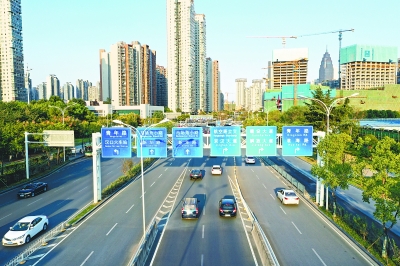This intersection has become "smart": it can not only perceive the traffic flow intelligently, but also control the traffic lights.

Wuhan Evening News (Reporter Cindy Wei correspondent Zhang Peng Wang Chen) Fanhu intersection in Wuhan used to be a "frequent visitor" of the top ten congested sections in Wuhan, but this year there is no congestion alarm, because it has become not only able to intelligently perceive the traffic volume, but also can intelligently control the traffic lights, and can be intelligently induced through the variable signal screen. It is called "the smartest intersection in Wuhan".
On the 22nd, the reporter learned from Wuhan Traffic Management Bureau that after the renovation of Fanhu Road intersection of Qingnian Road by using the intelligent intersection control system, the saturation of the three entrances in the north, south and northwest of the intersection was reduced by 13% on average, and the queue length was reduced by 12.7% on average, which effectively improved the traffic efficiency of the intersection and ensured the smoothness of the intersection.
According to the relevant person in charge of Wuhan Traffic Management Bureau, before the upgrade of wisdom, Fanhu Road intersection of Qingnian Road was the intersection of two expressways, with a peak hour traffic volume of about 10,000. The intersection is 400 meters away from Huaihai Road intersection and less than 800 meters away from Hankou Railway Station. The hoarding capacity of the road section is seriously insufficient, and the intersection often overflows in line. The traffic in the north-south direction of Huaihai Road intersection is over-saturated, and the two intersections are in a state of congestion for a long time.
In view of the situation at Fanhu intersection, the traffic control department started the intelligent intersection control system, and changed the road name warning signs, lane separation indication signs and signal lights into variable signal screens. When the traffic monitoring equipment at the intersection finds that the vehicles heading for Hankou Railway Station are overflowing, it will feed back to the signal in time, and adjust and optimize the intersection release scheme in minutes, and adjust the original two left turns and two straight lines of Changqing Road to four straight lines for alternate release, and control the vehicles to bypass and divert through Machangjiao Road and Xinhua Road.
When the traffic monitoring equipment finds that the vehicles in the direction from Huaihai Road to Fanhu Road on Youth Road reach the "congestion value", it can adjust the variable lane allocation in real time, optimize the traffic organization scheme and signal timing, and divert the traffic flow at Huaihai Road intersection into the intersecting secondary and branch roads such as Machangjiao Road, Xinhua Road and CBD area roads for bypass and diversion, thus alleviating the pressure on the main line.
Not only that, in the past, traffic facilities such as intersection signals, signs and variable lanes were all independent individuals. For intersections with long-term queue congestion, only drivers or on-site police can find them. After feedback to the traffic control department, after on-site investigation, the science and technology department will optimize the timing and the order department will optimize the lane distribution. At the end of the on-site construction, the optimization period will take at least 5-10 working days.
After intelligent transformation, the traffic control department set the daily lanes of Fanhu intersection as: left turn, straight line and straight right. When the real-time traffic monitoring system finds that the left-turn queue is too long, adjust the second lane to straight left to increase the left-turn traffic efficiency; If a left-turn vehicle overflows, a temporary ban on left-turn will be taken to avoid hanging at the intersection.
In order to let the driver know clearly about the intersection, the traffic control department has set up clear, eye-catching and complete luminous signs at the intersection, so that the driver can clearly know the real-time traffic situation at the intersection ahead. At the same time, Wuhan traffic police also push real-time traffic information of intersections to navigation or car screens through in-depth cooperation with navigation operators and car manufacturers, so that drivers can receive relevant information at the first time.